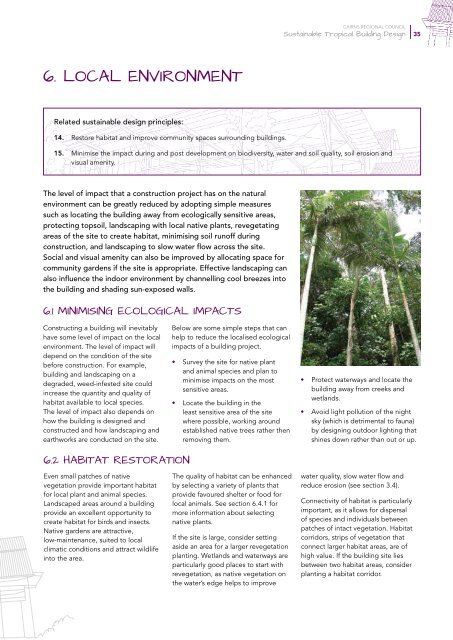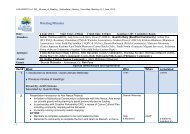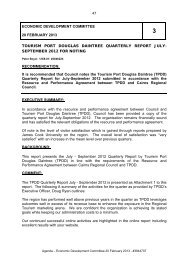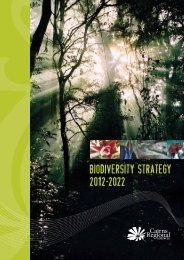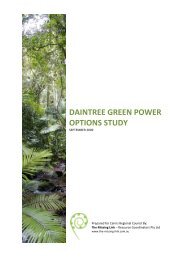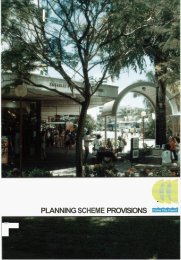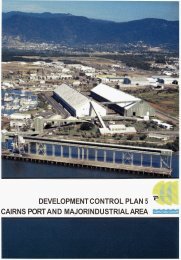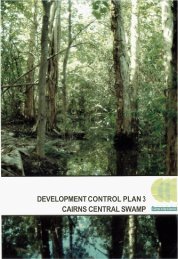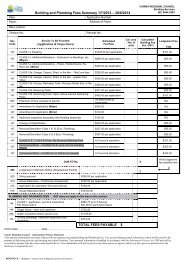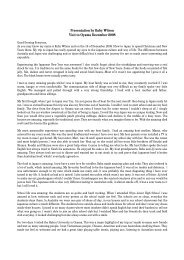SuStainable tropical building deSign - Cairns Regional Council ...
SuStainable tropical building deSign - Cairns Regional Council ...
SuStainable tropical building deSign - Cairns Regional Council ...
- No tags were found...
You also want an ePaper? Increase the reach of your titles
YUMPU automatically turns print PDFs into web optimized ePapers that Google loves.
<strong>Cairns</strong> <strong>Regional</strong> <strong>Council</strong>Sustainable Tropical Building Design356. LOCAL ENVIRONMENTRelated sustainable design principles:14. Restore habitat and improve community spaces surrounding <strong>building</strong>s.15. Minimise the impact during and post development on biodiversity, water and soil quality, soil erosion andvisual amenity.The level of impact that a construction project has on the naturalenvironment can be greatly reduced by adopting simple measuressuch as locating the <strong>building</strong> away from ecologically sensitive areas,protecting topsoil, landscaping with local native plants, revegetatingareas of the site to create habitat, minimising soil runoff duringconstruction, and landscaping to slow water flow across the site.Social and visual amenity can also be improved by allocating space forcommunity gardens if the site is appropriate. Effective landscaping canalso influence the indoor environment by channelling cool breezes intothe <strong>building</strong> and shading sun-exposed walls.6.1 Minimising ecological impactsConstructing a <strong>building</strong> will inevitablyhave some level of impact on the localenvironment. The level of impact willdepend on the condition of the sitebefore construction. For example,<strong>building</strong> and landscaping on adegraded, weed-infested site couldincrease the quantity and quality ofhabitat available to local species.The level of impact also depends onhow the <strong>building</strong> is designed andconstructed and how landscaping andearthworks are conducted on the site.Below are some simple steps that canhelp to reduce the localised ecologicalimpacts of a <strong>building</strong> project.• Survey the site for native plantand animal species and plan tominimise impacts on the mostsensitive areas.• Locate the <strong>building</strong> in theleast sensitive area of the sitewhere possible, working aroundestablished native trees rather thenremoving them.• Protect waterways and locate the<strong>building</strong> away from creeks andwetlands.• Avoid light pollution of the nightsky (which is detrimental to fauna)by designing outdoor lighting thatshines down rather than out or up.6.2 Habitat restorationEven small patches of nativevegetation provide important habitatfor local plant and animal species.Landscaped areas around a <strong>building</strong>provide an excellent opportunity tocreate habitat for birds and insects.Native gardens are attractive,low-maintenance, suited to localclimatic conditions and attract wildlifeinto the area.The quality of habitat can be enhancedby selecting a variety of plants thatprovide favoured shelter or food forlocal animals. See section 6.4.1 formore information about selectingnative plants.If the site is large, consider settingaside an area for a larger revegetationplanting. Wetlands and waterways areparticularly good places to start withrevegetation, as native vegetation onthe water’s edge helps to improvewater quality, slow water flow andreduce erosion (see section 3.4).Connectivity of habitat is particularlyimportant, as it allows for dispersalof species and individuals betweenpatches of intact vegetation. Habitatcorridors, strips of vegetation thatconnect larger habitat areas, are ofhigh value. If the <strong>building</strong> site liesbetween two habitat areas, considerplanting a habitat corridor.


